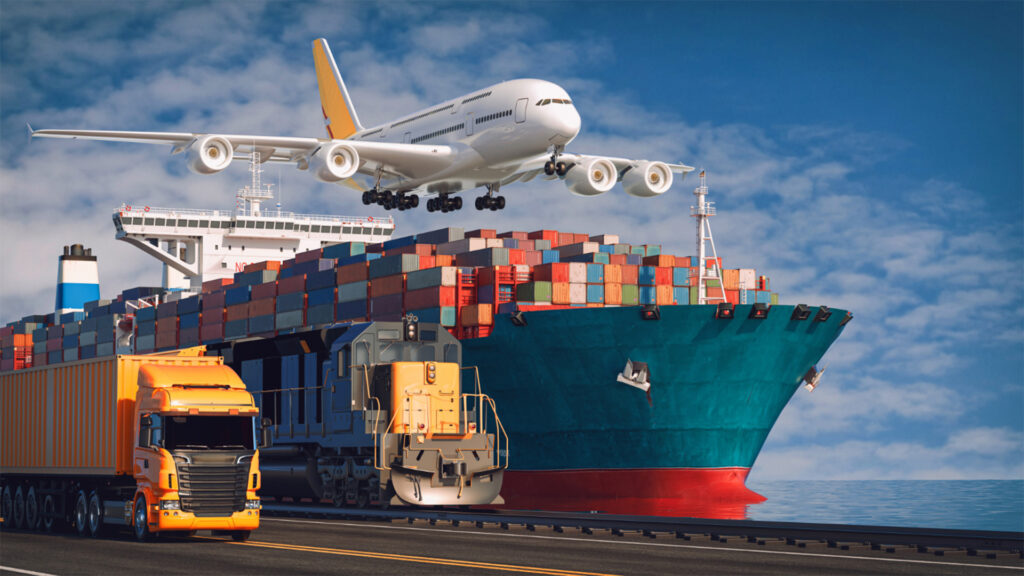Who assumes overall responsibility for the entire journey in multimodal transport? In today’s globalized world, the movement of goods is a complex process that involves multiple modes of transportation, crossing borders and continents. Multimodal transport, also known as intermodal transport, is a strategic approach that seamlessly integrates various transportation modes to ensure the efficient and smooth delivery of cargo from its origin to the final destination. In this blog, we will explore what multimodal transport is, its advantages, key components, and how it plays a pivotal role in the modern logistics landscape.
Understanding Multimodal Transport
What is multimodal transport? Multimodal shipping refers to transporting goods using a combination of two or more modes of transportation, such as road, rail, sea, and air. The primary objective is to optimize cargo movement, ensuring it reaches its final destination in a cost-effective, timely, and secure manner. Throughout the journey, the cargo remains in a single container or transport unit, minimizing the need for intermediate handling and reducing the risk of damage or loss.
Key Components of Multimodal Transport

Containers:
Standardized shipping containers are the backbone of multimodal shipping. These versatile containers are designed to be easily loaded onto ships, trains, and trucks, providing a consistent and secure method of transporting goods across different modes of transportation.
Seamless Integration:
One of the fundamental aspects of multimodal movement is the seamless integration of different transportation modes. This integration is achieved through a well-coordinated network of carriers, freight forwarders, and logistics providers.
Single Contractual Liability:
A single or multimodal transport operator (MTO) assumes overall responsibility for the entire journey, from origin to destination. This operator issues a single bill of lading, making the process more straightforward and reducing the administrative burden on the shipper.
Intermodal Equipment:
Standardized intermodal equipment, such as containers, swap bodies, and pallets, is critical to smooth transitions between different transportation modes. These standardized units are easily transferable from one mode to another, facilitating efficient handling and minimizing delays.
Difference between Multimodal and Intermodal Transport
The “multimodal” and “intermodal” transport are often used interchangeably but have distinct meanings in transportation and logistics. While both concepts involve the use of multiple transportation modes, there is a fundamental difference in the level of responsibility and liability taken by the involved parties.
What is the main difference between multimodal and intermodal transport documentation? What is the primary responsibility of the MTO in multimodal shipping? The MTO is responsible for coordinating the different transportation modes, arranging the necessary documentation, and ensuring the seamless movement of the cargo throughout the journey. If any issues or delays occur during transit, the MTO takes responsibility for resolving them and ensuring the timely delivery of the cargo to the consignee. Unlike multimodal transport, in intermodal transport, multiple carriers can be involved, each responsible for a specific segment of the journey. Each carrier issues its bill of lading for the respective part of the transportation, reflecting its contractual agreements with the shipper.
Key Differences
Responsibility and Liability:
A single transport operator (MTO) assumes overall responsibility and liability for the journey in multimodal movement. In contrast, intermodal transport involves multiple carriers, each assuming responsibility and liability for their part of the transportation.
Documentation:
Multimodal transport requires the issuance of a single bill of lading by the MTO, while intermodal transport involves multiple bills of lading issued by different carriers for each journey segment.
Interchangeability of Equipment:
Standardized intermodal equipment is used in intermodal transport, and the cargo remains in the same container or transport unit throughout the journey. In multimodal movement, standardized equipment is not required, and the cargo may be translated into different equipment at various points in the journey.
While multimodal and intermodal transport involves multiple transportation modes, the key difference lies in the level of responsibility and liability. In multimodal movement, a single operator takes overall responsibility for the entire journey, whereas in intermodal transport, multiple carriers are involved, each responsible for their part of the transportation. Understanding these differences is crucial for businesses when choosing the most suitable transportation solution for their goods, as each approach has advantages and considerations depending on the specific requirements of the cargo and the supply chain.
Advantages of Multimodal Transport

Cost Efficiency:
Multimodal shipping reduces overall transportation costs by optimizing various transportation modes. It allows businesses to choose the most cost-effective modes based on distance, cargo volume, and urgency.
Faster Transit Times:
Multimodal movement can significantly reduce transit times by leveraging the speed of different modes. For example, long-distance transportation by sea can be combined with faster air or rail transport for the last leg of the journey.
Increased Reliability:
Multiple transportation modes provide greater flexibility and resilience in unexpected disruptions, such as adverse weather conditions or port congestion.
Environmental Sustainability:
Multimodal transport promotes greener logistics by enabling more energy-efficient modes of transportation, such as trains and ships, which produce lower carbon emissions than trucks and airplanes.
Global Reach:
Multimodal movement allows for the transportation of goods to virtually any location, connecting landlocked regions with seaports and airports and facilitating international trade.
Reduced Risk of Damage:
Standardized containers used in multimodal shipping provide enhanced protection for goods during transit, reducing the risk of damage and ensuring the safe delivery of cargo.
Conclusion
In conclusion, Multimodal transport is a key enabler of global trade, allowing goods to move seamlessly across borders and continents. By integrating various transportation modes, it offers cost efficiency, faster transit times, increased reliability, and environmental benefits. With its ability to connect the world and open new trade opportunities, multimodal shipping has become an essential component of the modern logistics landscape. As global supply chains evolve, businesses embracing multimodal transport will be better positioned to navigate the complexities of international trade and deliver goods efficiently and competitively to markets worldwide.
At Galaxy Freight, we recognize the importance of efficient and integrated logistics solutions for businesses operating in today’s dynamic global marketplace. As a leading logistics provider, we offer comprehensive multimodal transport services that cater to the diverse needs of our clients. Our vast network of partners, intermodal hubs, and state-of-the-art technology ensures that your cargo moves seamlessly across various transportation modes, delivering your goods safely and on time.
Experience the power of seamless logistics with Galaxy Freight. Contact us today to discuss your logistics needs and discover how our multimodal shipping solutions can optimize your supply chain and drive business growth.



